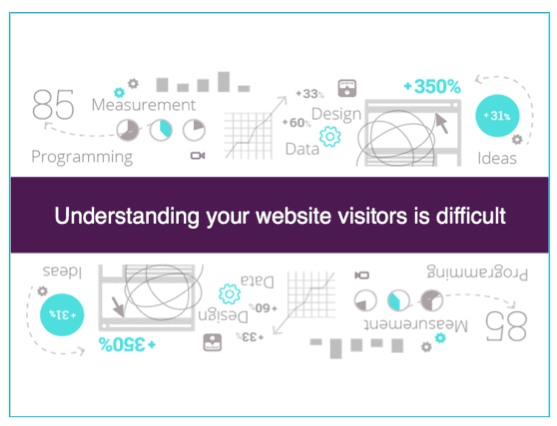Read your customer's digital body language to discover what they really want
This year has seen big companies make emotional measurement a regular part of their product planning. Marketers around the world can no longer afford to ignore this simmering trend. It's time to sit up and take notice of what’s sure to be the next big thing in community reach and conversion.
Think about having a conversation with your partner. They’re telling you that they’re fine, but their tone is abrupt, arms are folded and they’re avoiding eye contact with you. They may be saying they’re ok, but everything else is telling you what they’re really feeling.
And it’s just the same for marketers and digital entrepreneurs when it comes to their audiences.
Likes and views may give you some insight, but you’re missing the bigger picture – the real feelings behind the computer screen.
Communication is 93% non-verbal with body language and tone giving more insight than mere words can
The ability to read human emotions is essential for true machine intelligence.
Back in 1995, a paper on the topic of ‘affective computing’ identified the importance of human emotion when designing computer usability. It concluded by advising programmers to factor in a user’s feelings when writing software.
But since developers couldn’t ask users how they were feeling, other ways to read emotions needed to be found. That's when they began looking at movement.
Body language = instinctual human tool when it comes to understanding another person. In a conversation, a subtle twitch of the mouth or eye can give more meaning to what’s actually being said than the words being spoken.
In fact, research estimates that more than 90% of communication is nonverbal - something that’s putting computers at a huge disadvantage.
Affective computing is changing the face of digital marketing and sales
In 2003, an intensive study of mood measurement through movement was released. Exploring this research provided the knowledge to develop new techniques for computers to assess a user’s emotions and then react accordingly.
Though these new emotional analysis techniques are still evolving in predictive accuracy, if the research and technology are applied right, they allow companies to:
- understand their target market better
- tailor their approach based on more than mere geography and gender.
For example, consumers are more likely to buy when they’re in a good mood. With that in mind, an eCommerce store could pinpoint happy visitors and push a low-risk purchase into their path.
Take note: emotional analytics is an up-and-coming trend that will be critical for organizations that want real-time customer insights.
Facial recognition software is having a moment…but not for digital marketers
Facial recognition software is built on the research of psychologist Paul Ekman. He found that there were at least six universal human emotions expressed identically on everyone’s face, regardless of gender, age or culture.
While countless professionals, like police officers and animators, were already using this system, it caused a lot of buzz in the digital industry earlier this year.
But while it's great for market research or remote focus groups, it’s not something that can be applied to real-time web visitors. There are privacy issues to consider and the vast majority of internet users won’t give websites access to their webcams.
The good news for eSales teams is that there are more ways to read human emotions than looking at a person’s face…
Your website is already reading your potential customers, but not in a way that can really help you
Websites currently gauge a visitor’s reaction through manual tasks, such as the tabs they clicked or the forms they submitted. But while you have the facts of their visit, you’re missing the all-important ‘whys’.
You may be able to deduce a person visited your product page because of a ‘Buy Now’ button, but why did it only work on certain people? What was different about Visitor B who instead left your site at that point?
Those completed processes are measures of mechanics rather than emotions.
What marketers and web developers need is: access to emotional reactions...If they really want to know why visitors behave the way they do.
Your company can now measure human emotion without seeing your customer’s face
Rather than simply analyzing completed actions, you need to pay attention to physical movements in the lead-up.

While you can’t read their facial expressions, there’s more to monitoring body language than a smile or raised eyebrow. By linking hand movements to actions, eBusinesses are becoming much closer to understanding their visitors.
There are a number of ways in which this is attempted to be done:
Measuring emotion through a visitor’s mouse
We’ve all experienced those exit intent pop-ups triggered by a move towards the Close button, so this isn’t a brand new concept.
However, researchers have taken this technique to a new level by identifying different mouse movements and linking them to a person’s emotional state.
For example, a study found that people who are angry will often move their mouse with sudden jerks of movement, but in a surprisingly slow fashion.
Meanwhile, users who are feeling frustrated and confused or even sad will move at different speeds. They are also less precise in the way they move their mouse.
With this information, web developers have the ability to identify how different elements of their site are making people feel, such as a reaction to prices.
Down the line, this can also be expanded to taps and swipes from people visiting from a tablet or mobile.
Measuring emotion through a visitor’s keyboard
Imagine you’re in the office and a colleague is banging loudly on their keyboard. You now know they’re in a bad mood, so it’s not a good time to ask for a favor.
With keystroke technology, site owners can also be privy to that emotional insight.
In previous studies, researchers identified typical typing patterns associated with various emotional states. These feelings can be tracked through elements such as:
- Typing speed,
- Pauses in keystrokes,
- Key duration (time a key is depressed),
- How often Backspace is used,
- The numbers of times incorrect keys are hit.
- In one study, they identified hesitancy, nervousness, tiredness, sadness, confidence and relaxation with an accuracy rating of 77-88%. Anger and excitement could be recognized with 84% accuracy.
Here’s how emotion detection can help you improve your services
In 2010, the price of an American’s attention was valued at six cents per minute; by 2014, the rate had increased by 20%. This shows that because consumer focus is harder to get these days, it’s worth a significant amount to businesses and brands.

So how will emotion detection make you money?
1. It will take streamlining consumer experience to a whole new level
To keep a consumer’s attention on your website, you need to make their experience enjoyable.
Tracking emotional data gives you a better understanding of what exactly is frustrating visitors. Fixing these problems, such as your site's UI/UX, results in better moods and higher conversion rates.
2. Real-time emotional targeting will be more effective
Up until now, targeting has been completely focused on facts, such as gender or geography. But as humans, we are so much more than these facts and often slaves to our emotions.
This technology can facilitate behavior-based targeting with specialized actions for specific behavior groups. For an eCommerce site, this means soothing visitors in a bad mood and selling to those who are feeling optimistic.
3. It will allow you to tailor a personalized in-the-moment experience for users
For example, if a computer game could identify a user’s emotional state, it could change different elements, such a volume or control sensitivity, to enhance their experience.
This means the gamer is more likely to become a loyal buyer of your brand.
4. It’s a cheaper way to mimic ‘brick and mortar’ salespeople online
If a customer walks into a store, a salesperson can tell by their body language, tone, and facial expressions how close they are to buying. Digital emotional tracking would give your website a similar insight, but without the high cost of hiring sales staff.
We’re entering a new era of customer analysis – don’t get left behind!
Though this predictive technology is still fresh and improving in accuracy, emotional detection is moving in the direction of becoming an incredibly powerful marketing trend.
While the convenience and reach of shopping, researching or learning online has been welcomed with open arms, consumers have lost out.
Most people miss the personalized experience of shopping in a store or dealing with a business in person. It's not unusual to hear digital users say that they now feel like a mere number.
Emotional analysis means your site will have the ability to read a potential customer’s emotions and give them personalized treatment similar to a store.
On top of that, you’ll suddenly have a much deeper analysis of what they’re feeling and how visitors are reacting to your site. You may even have more insight than the visitor has of themselves.
Basically, with computerized emotion detection, online marketing, sales and customer service may never be the same again.
Jonathan Friedman: CEO & Co-Founder at Reactful. Passionate internet entrepreneur working on projects on the cutting edge of digital marketing, web analytics and conversion optimization @Reactful.

Thanks to
Jonathan Friedman for sharing their advice and opinions in this post. Jonathan Friedman: CEO & Co-Founder at Reactful. Passionate internet entrepreneur working on projects on the cutting edge of digital marketing, web analytics and conversion optimization at
Reactful.





 Thanks to
Thanks to 



